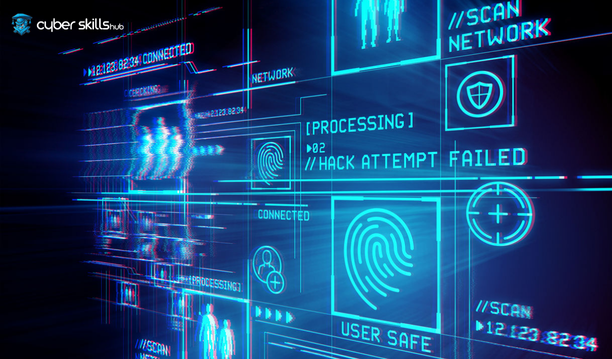Currently Empty: $0.00
Spyware: The Best 2024 Guide and Ways to Protect

Spyware has the ability to collect data without users knowing. So how did this software become so capable?
2023 was an extremely busy year for spyware activity.
For cybersecurity experts, 2023 has been a serious challenge in tracking down and eliminating spyware threats.
What is Spyware?
Spyware is a type of malicious software designed to collect users’ personal information, often unnoticed. Data that should be protected, such as private information, internet habits, bank account details and passwords, can be intercepted without the user’s consent. This can lead to serious consequences, such as a breach of personal privacy and the risk of financial loss.
Thanks to their effective camouflage and complex structure, they are also capable of evading the scans of antivirus programs. Therefore, spyware threats are an issue that requires special precautions and scrutiny in the field of cyber security.
Key Features of Spyware
Spyware accesses personal data covertly, tracking and collecting private information without users realizing it. This data can range from sensitive financial information to personal contact details.
They circumvent the detection mechanisms of cybersecurity systems by constantly changing their behavior and having polymorphic structures. This means that outdated security software may be insufficient against spyware.
In 2023, a third of spyware has a new or variant code structure.
Protection strategies should not be limited to traditional antivirus scans, but should be supported by continuous education and user awareness. Advanced threat detection systems play a vital role in early detection of such threats.
Intensive Use Areas and Victims
The use of spyware is often concentrated in order to conduct full surveillance of the target’s electronic devices.
- Private Sector: It is used to obtain trade secrets of companies and gain competitive advantage.
- Individual Users: Used to track financial and personal data of individual users.
- Government Agencies: Government agencies are targeted to leak information that could jeopardize national security.
- Educational Institutions: Educational institutions are being attacked for valuable information such as research and development data and student information.
- Finance Sector: Banks and other financial institutions are targets for fraud and theft attempts.
Especially users with vulnerable and outdated systems are frequent victims of spyware.
This software exposes victims to serious risks such as information theft, phishing and financial losses.
Harms of Spyware
Spyware leads to data theft that can cause financial and emotional stress on victims. Malware compromises individuals’ private and financial information.
Attackers who hijack users’ devices can misuse personal data, leading to identity theft and fraud. This is a major security breach that can lead to reputational damage and legal issues.
Using spyware, hackers can silently monitor and remotely control victims’ daily activities.

Privacy Breaches and Information Theft
The use of spyware fundamentally undermines the privacy of individuals. By gaining access to personal data, such software leads to privacy violations and can compromise even the most sensitive information of victims.
Information theft often goes unnoticed. Victims are at risk of critical data obtained through spyware being sold, marketed or used for malicious purposes online. These actions allow victims’ private information to be intercepted and misused, ranging from banking details, social media account passwords, email content and location information.
There is no doubt that information security breaches can cause social and psychological damage as well as financial losses for victims. While the compromise of financial data causes direct financial damage, such as credit card fraud and identity theft, the disclosure of private life causes damage to personal reputations and severely impairs a sense of personal security.
An important point emphasized by experts is that these breaches of privacy can often lead to irreversible consequences. Once personal data is leaked online, there is a high likelihood of a complete loss of control. Therefore, in order to prevent data breaches and privacy attacks, it has become an inevitable need to proactively take security measures and keep them constantly updated.
Impact on Device Performance
Spyware can cause serious degradation in the performance of the devices they infect. These degradations negatively impact the user experience and reduce productivity.
- Significant reduction in battery life: Spyware runs continuously in the background, causing the device’s battery to drain quickly.
- Overheating of the device: Continuous data collection and transmission can overload the processor and other hardware.
- System slowdown: The constant occupation of the processor and memory due to hidden activities reduces the overall speed and response time of the system.
- Storage space issues: Storage space used for storing collected data becomes unusable for other functions of the device.
Each of these effects listed above causes the device to operate below its expected performance.
While users often associate such performance issues with device aging or software updates, the presence of spyware can be the root cause of these problems.
Popular Spyware in 2023
Throughout the year, various types of spyware posed a serious threat to consumers and companies. In particular, state-sponsored spyware applications such as Pegasus caused an international crisis by targeting the personal data of individuals and non-governmental organizations. In addition, malware such as Flubot and TangleBot have stolen data ranging from banking information to personal communications.
In addition to such threats, in 2023, stalking apps, also known as stalkerware, gained popularity. These apps are often designed to be used for harassment purposes and are installed unnoticed on victims’ devices. The dangers of tracking apps allow real-time monitoring of users’ daily life activities, as well as conversations and location information, seriously violating privacy rights. This underscores the importance of protecting personal data and encourages individuals to be more vigilant in the digital environment.
Most Used Spyware
The world of spyware threatens individuals’ data with a variety of tools and techniques.
- Pegasus: Recognized as state-sponsored spyware, it uses sophisticated techniques to infiltrate devices.
- Flubot: A trojan specifically focused on Android devices and aimed at stealing banking data.
- TangleBot: A malware that hijacks users’ devices and accesses personal data via SMS messages.
- mSpy: As a stalkerware for individual monitoring, it tracks users’ messaging, location.
- FlexiSPY: Another stalkerware with extensive features, notable for its ability to record phone calls.
These software attacks are carried out using different techniques, creating a wide spectrum of risks.
Their widespread use makes it imperative that cyber security measures are constantly updated and that individuals’ awareness of information security is increased.

Emerging Threats and Usage Trends
Cyber threats have a dynamic structure.
The year 2023 witnessed a significant increase in emerging spyware threats and attack techniques. Attackers ranging from casual cyber hackers to state-sponsored actors are using sophisticated spyware to gain access to targeted information. In particular, there has been an increase in advanced persistent threats (APTs).
The proliferation of remote working models has increased the threats.
Changes in global user behavior also play an important role in the evolution of spyware. Increased remote working and education trends due to the pandemic have created new areas of opportunity for cyber attackers – spyware has become a vector to deepen these vulnerabilities.
The statistics point to an alarming rise.
Recently, there has been an increase in spyware infiltrating target devices by exploiting vulnerabilities in popular applications, significantly increasing the threat to the private data of individuals and organizations. The gap between existing security capabilities and the sophistication level of the attack is the most critical issue to be solved in 2024.
Spyware Protection Methods
The first step in protecting against spyware is to keep your security measures up-to-date. Periodically installing the latest updates to the operating system and applications you use and closing known vulnerabilities should form the basis of your defense strategy. It is also important to use complex and strong passwords, enable features such as two-factor authentication, and be alert to any suspicious activity.
While updates and strong passwords are important defense mechanisms, antivirus and anti-malware programs are essential for complete protection against spyware threats. Such security software also provides proactive protection against unknown threats, thanks to constantly updated threat databases, and the necessary follow-up to block potential attacks.
Effective Security Software
An effective antivirus program acts as the first line of defense against spyware. This software can automatically detect and block malicious activity.
Comprehensive security solutions aim to keep potential threats at bay by offering real-time protection as well as regular system scans. Modern antivirus software can also analyze user behavior to identify suspicious activity in advance.
Anti-malware software protects against a wide range of malware as well as spyware. Unlike most antiviruses, they offer more in-depth protection by specifically targeting malware.
Integrated security suites provide comprehensive protection by combining antivirus and anti-malware features. These packages often include additional features such as firewalls, spam filters and parental control.
Industry-standard security software designed specifically for commercial organizations more effectively protects corporate networks and data breaches. They are equipped with advanced threat prevention technologies and incident response capabilities.
Defense Strategies and Security Practices
Raising security awareness is considered the first line of defense against spyware. User education programs play a preventive role by raising awareness of the dangers.
Two-factor authentication (2FA) significantly increases account security. This is a critical way to prevent unauthorized access.
Using strong and unique passwords makes it harder for others to guess or crack. Password managers help manage secure and complex passwords across different accounts, raising the level of security.
A multi-layered security approach creates a web of protection, making it difficult for spyware to penetrate. Multiple defense mechanisms such as firewalls, operating system and application updates, malicious email attachments and web browser security plug-ins each provide different levels of security, adding extra protections against potential vulnerabilities.
If you would like to learn more about this topic, please read our articles titled “How to Protect Yourself Against Social Engineering Attacks” and “Cyber Security: How to Defend Against Technological Threats.” These articles provide detailed information on methods of protection against social engineering attacks and cyber security issues.
Frequently Asked Questions About Spyware
What is spyware?
Spyware is a type of malicious software designed to collect personal information without users’ knowledge. It can collect sensitive information such as internet habits, bank account details and passwords without authorization.
How does spyware work?
Spyware is installed covertly on users devices and then, thanks to its polymorphic nature, bypasses the detection mechanisms of security systems. They monitor and collect private information without users being aware of it.
What are the ways to protect yourself from spyware?
To protect against spyware, security measures such as keeping the operating system and applications up to date, using strong passwords and two-factor authentication should be taken. In addition, continuous protection should be ensured by using reliable antivirus and anti-malware software.
What are the harms of spyware?
Spyware can lead to the theft of personal and financial information, degraded device performance and privacy violations. Such damage can have serious consequences, including identity theft and financial losses.
What are the most common uses of spyware?
Spyware is mainly used in the private sector to intercept trade secrets, steal financial information from individual users and leak national security information from government agencies. Educational institutions and the financial sector are also targets.
What are the most common types of spyware?
In 2023, spyware such as Pegasus, Flubot, TangleBot, mSpy and FlexiSPY were widely used. These target user information using different techniques and pose serious security threats.







